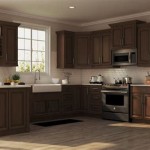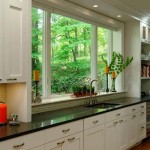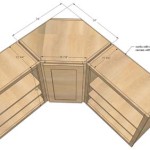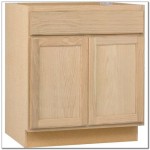```html
Colonial Style Kitchen Ideas
The Colonial style kitchen evokes a sense of history, warmth, and timeless elegance. Rooted in the architectural and design aesthetics of the 18th century, this kitchen style prioritizes functionality, durability, and a connection to the natural world. Recreating this style involves careful consideration of materials, colors, fixtures, and decorative elements that reflect the values and needs of early American settlers.
When designing a Colonial style kitchen, one should aim to create a space that feels both inviting and practical. The emphasis is on creating a room where cooking, dining, and socializing seamlessly blend. The color palette often leans toward soft, muted tones, reminiscent of natural dyes and pigments available during the Colonial period. Wooden cabinetry, often painted in a creamy white, light gray, or muted blue, is a defining characteristic. Classic hardware, such as wrought iron or pewter knobs and pulls, further enhances the authenticity of the design.
The layout of a Colonial kitchen frequently revolves around a central workspace, such as a large island or a farmhouse sink, facilitating efficient meal preparation and allowing for social interaction. The incorporation of vintage-inspired appliances and fixtures adds character and charm, while maintaining modern functionality. Open shelving, showcasing antique dishware and cookware, contributes to the overall visual appeal and reinforces the historical narrative.
Color Palette and Material Selection
The foundation of a Colonial style kitchen lies in its carefully chosen color palette and materials. Opting for colors inspired by nature is crucial. Soft whites, creams, and off-whites are common choices for walls and cabinetry, providing a neutral backdrop that complements other elements. Muted blues, greens, and yellows can be incorporated as accent colors, adding subtle pops of visual interest without overpowering the overall aesthetic. These colors can be introduced through painted cabinetry, backsplash tiles, or decorative accessories.
Material selection should prioritize natural and durable options. Wood is a dominant element, used extensively for cabinetry, flooring, and countertops. Pine, maple, and cherry are popular choices, offering a range of grains and tones that contribute to the warmth and authenticity of the space. Stone, such as granite or slate, can be used for countertops and flooring, providing a durable and visually appealing surface. Brick, both real and faux, can be incorporated into backsplashes or accent walls, adding texture and historical context. The materials chosen should have a sense of age and quality, reflecting the values of early American craftsmanship.
Hardware selections play a significant role in defining the Colonial aesthetic. Wrought iron or pewter knobs and pulls are classic choices, complementing the wooden cabinetry and adding a touch of rustic charm. Oil-rubbed bronze is another suitable option, providing a warm and aged finish. Lighting fixtures should also reflect the historical period, with options such as pendant lights with simple shades, sconces with candle-like bulbs, or chandeliers with a traditional design. Avoid modern, sleek hardware and lighting, as these elements will detract from the overall Colonial feel.
Cabinetry and Storage Solutions
Cabinetry is a defining element of any kitchen, and in a Colonial style kitchen, it takes center stage. Simple, Shaker-style cabinets are a popular choice, characterized by their clean lines and recessed panels. These cabinets can be painted in a variety of colors, but whites, creams, and light grays are the most common. Raised-panel cabinets, with more ornate detailing, are also a viable option, adding a touch of formality and sophistication.
Open shelving is a key feature of Colonial kitchens, providing a display space for antique dishware, cookware, and decorative items. These shelves can be made of wood or painted to match the cabinetry. They should be carefully styled with items that reflect the historical period, such as stoneware pottery, copper pots, and vintage cookbooks. Open shelving not only adds visual interest but also provides easy access to frequently used items.
Storage solutions should be both functional and aesthetically pleasing. Drawers with solid wood construction and dovetail joints are indicative of quality craftsmanship. Pull-out shelves and organizers can be incorporated into cabinets to maximize storage space and improve efficiency. Pantry cabinets, either freestanding or built-in, are essential for storing food and kitchen supplies. These cabinets should be designed to blend seamlessly with the overall aesthetic, with details such as raised panels, decorative moldings, and antique hardware.
Including a pie safe or jelly cupboard can significantly enhance the Colonial aesthetic of the kitchen. These pieces were commonly used to store food items in the past, and they add a sense of authenticity and charm to the space. These pieces can either be authentic antiques or reproductions, depending on budget and availability.
Fixtures and Decorative Accents
Fixtures and decorative accents are the finishing touches that complete the Colonial style kitchen. The choice of sink is particularly important, with farmhouse sinks being a quintessential feature. These sinks, typically made of fireclay or porcelain, have a large, deep basin and an exposed front apron, adding to the rustic charm of the space. Faucets with a traditional design, such as bridge faucets or gooseneck faucets, are also essential. These faucets can be made of brass, copper, or oil-rubbed bronze, complementing the other hardware in the kitchen.
Lighting fixtures should be chosen to create a warm and inviting atmosphere. Pendant lights with simple shades can be hung above the kitchen island or dining table, providing task lighting and adding visual interest. Sconces with candle-like bulbs can be mounted on walls, creating a soft and ambient glow. A chandelier with a traditional design can be hung in the center of the room, serving as a focal point and adding a touch of elegance. Avoid modern, minimalist lighting, as it will clash with the overall Colonial aesthetic.
Decorative accents should be carefully chosen to reflect the historical period and the personal tastes of the homeowner. Antique dishware, such as stoneware pottery, pewter dishes, and transferware plates, can be displayed on open shelves or in glass-front cabinets. Copper pots and pans can be hung from pot racks or displayed on countertops, adding a touch of warmth and character. Vintage cookbooks, antique clocks, and framed samplers can be used to decorate walls and countertops, adding a sense of history and personality. Plants, such as herbs and flowers, can be placed in windowsills or on countertops, bringing a touch of nature into the kitchen. The key is to curate a collection of items that feel authentic and reflect the values and aesthetics of the Colonial era.
Consider adding a fireplace, or a faux fireplace surround, to create a focal point that is deeply rooted in Colonial design. The hearth can be decorated with period-appropriate items, further enhancing the historical atmosphere.
Flooring options typically include wide-plank hardwood, brick, or slate. These materials provide a durable and visually appealing surface that complements the overall Colonial aesthetic. Rugs, particularly those with a traditional pattern or a woven construction, can be added to soften the space and add a touch of warmth.
Window treatments should be simple and functional. Shutters, curtains made of linen or cotton, or simple valances are all appropriate choices. Avoid elaborate or modern window treatments, as they will detract from the historical feel of the kitchen.
Ultimately, creating a Colonial style kitchen is about capturing the essence of a bygone era while incorporating modern functionality. By carefully selecting materials, colors, fixtures, and decorative accents, one can create a space that is both beautiful and practical, a true reflection of the American Colonial spirit.
```
Colonial Kitchen Design Pictures Ideas Tips From

Colonial Kitchen Pictures To Inspire Your Ideas Lovetoknow

Colonial Style Kitchens Truly Timeless And Sophisticated

Colonial Kitchens

Colonial Kitchen Cabinet Ideas Interior Design

A Colonial Style Kitchen Renovation In Brooklyn New York

A Melrose Colonial Kitchen Makeover Northshore

Classic Colonial Home Design White Kitchen Top Designs

Before After Dutch Colonial Kitchen Reed Interior Design

3 Colonial Kitchen Renovations Show Off Timeless Style Sleek Upgrades
Related Posts








